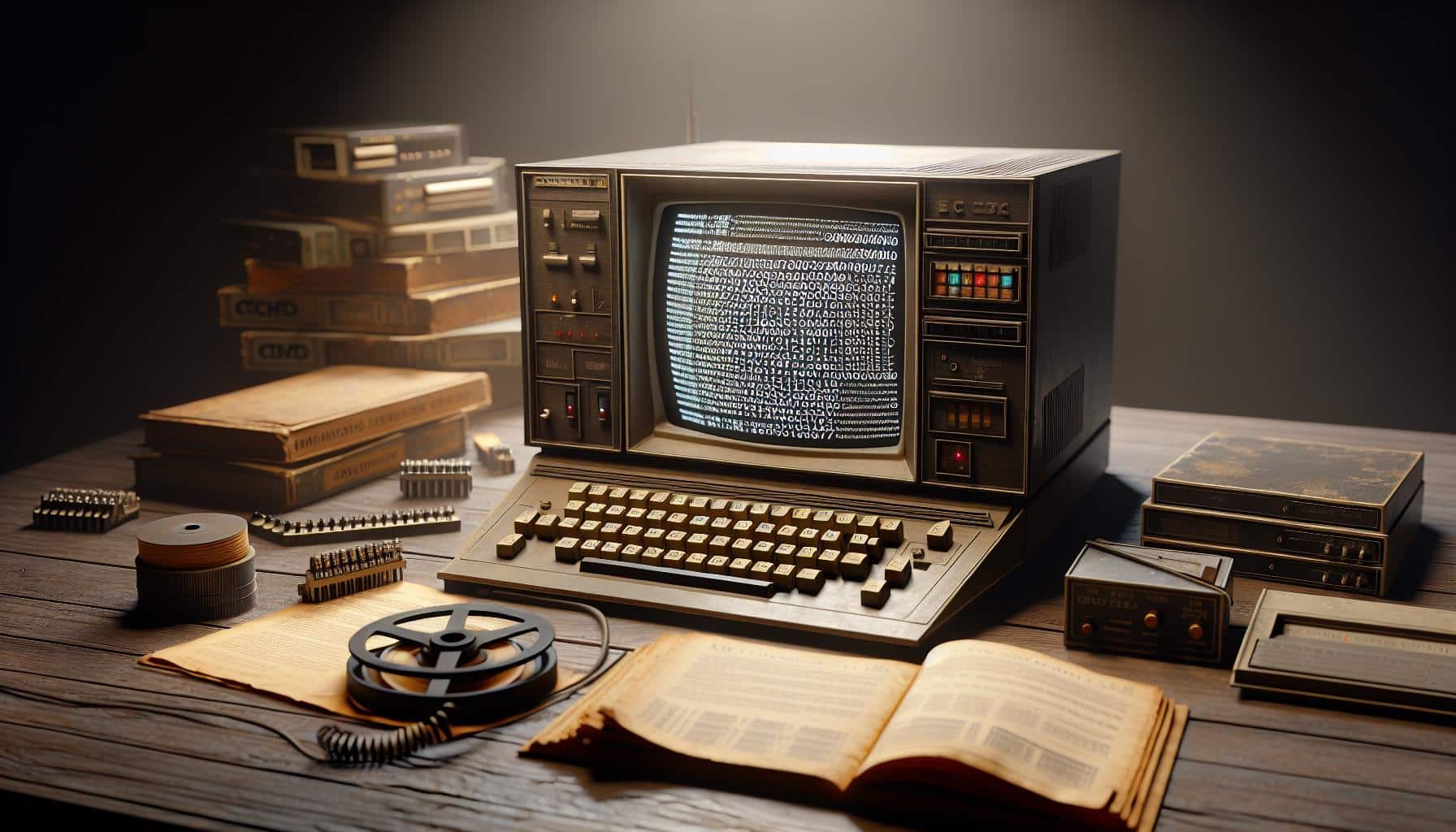In the vast universe of digital data, you’ve likely encountered the term “7 bit.” But what does it really mean? How does it impact your daily digital interactions? Let’s delve into the fascinating world of binary data and explore the significance of 7 bit.
At its core, 7 bit refers to a unit of data storage that’s less common today but was once a cornerstone in the world of computing. It’s a concept that might seem complex, but don’t worry, we’ll break it down for you in a way that’s easy to understand.
Table of Contents
ToggleUnderstanding 7 Bit Encoding
What Is 7 Bit Encoding?
7 Bit encoding finds its application primarily in data storage and transmission. It’s an early method applied in the realm of computing to encode data. This form of encoding, as the name implies, uses 7 bits per character. Each bit, a binary digit, can represent two states, 0 or 1. Thus, each 7 bits can represent a total of 128 possible states (2^7 = 128). This encoding format accommodates the entirety of the ASCII character set, considering ASCII defined 128 unique character codes.
In more tangible terms, consider sending a message with the words “Hello.” Each letter in this message corresponds to an ASCII value. As an instance, the ASCII value for “H” equals 72. In binary representation, 72 transforms into a 7 bit sequence, such as 1001000. Each character in the message translates to a similar 7 bit sequence. Therefore, the 7 bit encoding system enables the transmission and storage of messages in a standard, universally understood format, regardless of the physical medium used.
History of 7 Bit Encoding
The history of 7 bit encoding intertwines with the history of ASCII, the American Standard Code for Information Interchange. ASCII became the first widely accepted standard for character encoding, adopted in the early 1960s. Its design involved presenting characters in 7 bit sequences. As ASCII encompassed just 128 distinct character possibilities, a 7 bit sequence sufficed. It covered all standard English letters, numbers, punctuation, and a selection of control characters.
The predominance of 7 bit encoded ASCII began to fade with the evolution of computing and the internet. The need for wider character sets, accommodating special symbols, accented characters, and non-roman script, led to the development of 8 bit encoding standards like ISO-8859-1 and eventually, multibyte encoding systems like UTF-8. Yet, despite this evolution, 7 bit encoding remains in use within specific scenarios–most notably in communications protocols where the eighth bit serves as a parity bit for error checking.
Applications of 7 Bit Encoding
Under this section, you’ll explore how the ‘7 bit’ encoding shines in various real-world applications, particularly in ASCII and text communications, and where its use has been limited in modern times.
ASCII and Text Communications
In the realm of text communications, 7 bit encoding plays a crucial role. ASCII, the American Standard Code for Information Interchange, is one of the most fundamental building blocks in this regard. It’s essentially a character encoding standard that uses 7 bits to represent each character.
This configuration allows it to depict a total of 128 different characters— enough for the English alphabet (both in upper and lower case), numbers, and common punctuation marks. Given this, it’s no surprise that ASCII underpins a majority of text-based communications, especially in the early computing era.
To cite a specific instance, consider emails. When you send an email, the text contained therein is encoded into data packets using ASCII. That’s because ASCII’s 7-bit character set corresponds impeccably with SMTP, the standard protocol for email transmission, which also operates primarily on 7-bit characters.
Limitations in Modern Usage
While 7 bit encoding is stalwart in certain areas, its usage in modern computing is somewhat restrained. Its biggest limitation lies in its inherent architecture: With a maximum of 128 possible characters, it lacks the capability to represent the vast array of symbols, alphabets, and special characters present in the global linguistic panorama. That’s where other encoding systems like UTF-8 come into play.
UTF-8, for instance, is an encoding method that builds on ASCII, while simultaneously accommodating a far greater range of characters. It does this by using anywhere from one to four 8-bit bytes per character. This scalability allows it to represent just over a million different characters, providing unprecedented flexibility and utility in modern applications.
Moreover, in a world that’s constantly exchanging data in large volumes, 7 bit encoding isn’t a particularly efficient or speed-efficient option. Network protocols nowadays, like Ethernet and Wi-Fi, typically deal with 8, 16, or 32 bits at a time – not 7. That said, the advent of these wider character sets and encoding standards doesn’t completely obliterate the relevance of 7 bit encoding. Rather, it relegates it to specific scenarios where its simplicity and legacy prove advantageous.
Comparing 7 Bit to Other Encoding Schemes
7 Bit vs 8 Bit Encoding
Between the two encoding schemes, 7 bit and 8 bit represent a significant difference in computing. When using 7 bit encoding, 128 characters (including control characters and printable characters) from the ASCII set are represented. In contrast, 8 bit encoding, commonly seen with the Extended ASCII, includes an additional 128 characters, totaling 256 distinct characters. This extension allows representation of additional special characters, foreign language characters, and graphic symbols, thus adding to the versatility of data expression.
Showcasing the difference between the two, here’s a simplified comparison table:
| Encoding Scheme | Number of Representable Characters |
|---|---|
| 7 bit | 128 |
| 8 bit | 256 |
The adoption of 8 bit encoding over the 7 bit illustrates a quest for enhanced data expression to cater to global computing needs.
Impact on Data Transmission
The effects of using 7 bit encoding in data transmission are twofold. On the positive side, its limited character set means smaller data size, faster transmission rate, and less resource intensity. Hence, 7 bit encoding plays a significant role in text communications, like email protocols (Simple Mail Transfer Protocol, for instance), where smaller data sizes are paramount.
On the downside, 7 bit encoding’s inability to represent an ample range of characters becomes a massive drawback in the face of multicultural data representation. This limitation has pushed for 8 bit and more robust encoding schemes, like UTF-8, which can represent a vast array of characters, thereby enabling seamless data transmission globally.
Remember, despite the increasing relevance of advanced encoding systems like UTF-8, 7 bit’s simplicity and legacy make it an essential tool in specific scenarios where resource limitation is a factor.
Future of 7 Bit Encoding
If you’re working with data transmission or storage, understanding encoding paradigms such as 7 bit is pivotal. Though it’s often overlooked today, 7 bit encoding has a space carved out for itself in specific scenarios like legacy systems where simplicity matters. To appreciate its continued relevance, let’s examine how technological advancements relate to 7 bit encoding, dig into where this type of encoding still shines, and explore the possibilities for its future.
Technological Advancements and 7 Bit
Technological advancements continue unabated, growing both in scope and sophistication. Data storage and transmission methods have notably evolved, especially given the global nature of today’s digital age. As demonstrated previously, larger encoding schemes like UTF-8 dwarf 7 bit in terms of range, with 7 bit’s 128 character limit being but a fraction of UTF-8’s capacity.
Despite this, 7 bit holds its ground in specific scenarios. Why, you may be wondering? The answer lies in its relative simplicity and the advantages it provides for particular systems and circumstances. So, let’s dive further into these scenarios where 7 bit encoding still serves a unique purpose.
Where 7 Bit Still Shines
In a world where languages abound and emojis are all the rage, 7 bit encoding might seem insufficient for today’s global communications. However, its simplicity still gives it a berth in certain niche situations.
Consider legacy email servers or embedded systems with limited resources. In these areas, 7 bit encoding finds a place, given its capability to represent ASCII characters efficiently. Another example could be text-based communications involving only the basic Latin alphabet. Here, 7 bit’s smaller data size and faster transmission rates outshine wider character sets.
The Future and Possibilities of 7 Bit
As with all things tech, the future of 7 bit encoding is multi-faceted and filled with possibilities. One might expect its prevalence to diminish considering the advent of wider, more versatile encoding standards. However, 7 bit’s continued relevance within particular contexts suggests otherwise.
Conclusion
You’ve journeyed through the world of 7 bit encoding, from its historical ties with ASCII to its current applications and future prospects. You’ve seen how it’s remained relevant despite the rise of more versatile encoding standards. It’s clear that 7 bit encoding still has its place, particularly in legacy systems and situations where simplicity is paramount. Its efficiency in representing ASCII characters and faster transmission rates for basic Latin alphabet communications make it a go-to choice in certain niche areas. While it’s true that the digital world is moving towards larger encoding schemes like UTF-8, 7 bit encoding isn’t going anywhere soon. It’s a testament to the enduring power of simplicity and efficiency in the ever-evolving field of computing. So, as you navigate the complex landscape of data storage and transmission, remember the humble 7 bit – a small but mighty player in the world of computing.
What is “7 bit”?
“7 bit” is a term in computing that refers to a unit of data storage. Its application in data storage and transmission is most notable through 7 Bit encoding, as it uses 7 bits per character to represent the ASCII character set.
Where did 7 bit encoding originate from?
7 bit encoding is historically tied to ASCII, which is the first widely accepted standard for character encoding.
Has modern computing replaced 7 bit encoding?
Modern computing has indeed led to the development of wider character encoding sets like UTF-8. However, despite these advances, 7 bit encoding remains relevant in specific scenarios where simplicity and efficiency are imperative.
Where is 7 bit encoding most useful?
Today, 7 bit encoding is most applicable in legacy systems and in situations where resources are limited. Its efficiency in representing ASCII characters makes it highly valuable for basic Latin alphabet communications, especially in legacy email servers.
Will 7 bit encoding remain relevant in the future?
Despite the advancement and rise of wider encoding schemes, 7 bit encoding may continue to hold relevance within certain contexts. Its simplicity and efficiency make it well-suited to niche areas with specific requirements, such as systems with limited resources.






















